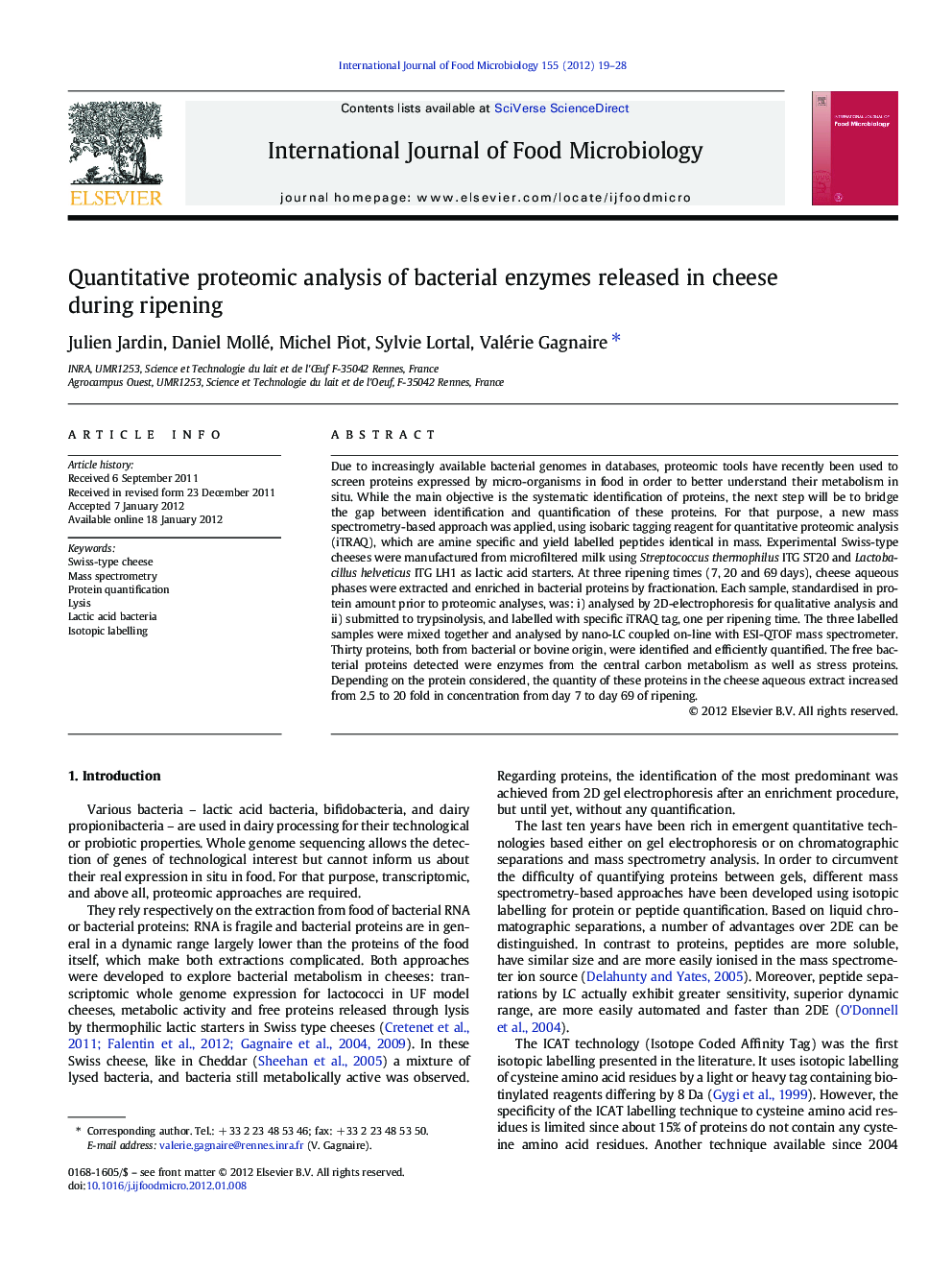| Article ID | Journal | Published Year | Pages | File Type |
|---|---|---|---|---|
| 4367507 | International Journal of Food Microbiology | 2012 | 10 Pages |
Due to increasingly available bacterial genomes in databases, proteomic tools have recently been used to screen proteins expressed by micro-organisms in food in order to better understand their metabolism in situ. While the main objective is the systematic identification of proteins, the next step will be to bridge the gap between identification and quantification of these proteins. For that purpose, a new mass spectrometry-based approach was applied, using isobaric tagging reagent for quantitative proteomic analysis (iTRAQ), which are amine specific and yield labelled peptides identical in mass. Experimental Swiss-type cheeses were manufactured from microfiltered milk using Streptococcus thermophilus ITG ST20 and Lactobacillus helveticus ITG LH1 as lactic acid starters. At three ripening times (7, 20 and 69 days), cheese aqueous phases were extracted and enriched in bacterial proteins by fractionation. Each sample, standardised in protein amount prior to proteomic analyses, was: i) analysed by 2D-electrophoresis for qualitative analysis and ii) submitted to trypsinolysis, and labelled with specific iTRAQ tag, one per ripening time. The three labelled samples were mixed together and analysed by nano-LC coupled on-line with ESI-QTOF mass spectrometer. Thirty proteins, both from bacterial or bovine origin, were identified and efficiently quantified. The free bacterial proteins detected were enzymes from the central carbon metabolism as well as stress proteins. Depending on the protein considered, the quantity of these proteins in the cheese aqueous extract increased from 2.5 to 20 fold in concentration from day 7 to day 69 of ripening.
► First use of iTRAQ labelling to quantify bacterial enzymes released in cheese during ripening. ► Different metabolic pathway over expressed, depending on the bacterial strain. ► Starter strains encountered stresses in cheese. ► Dynamic investigation applicable to other fermented food products.
